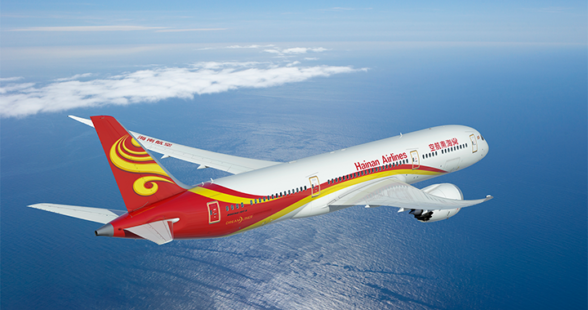120 seconds with VP of Commercial at Hainan Airlines, Jason Liu, is enough time for Kirsten Levermore and Xingyu Wang to discover how airlines are adapting to the demands of the 21st century and the needs of a connected world
How is the 21st century changing the airline industry?
Succeeding as an airline in the 21st century means managing limited resources in a more and more fiercely competitive environment. The industry as a whole has seen a slackening profit growth rate, compared with a steady increase in GDP and a vast capacity for growth. There is also much more onus on airlines to find alternative energy sources to make the industry more environmentally friendly as a whole – but, at the same time, we also have to be more profitable. Some airline companies also use popular travel destination as a catch to attract clients. Whenever you book Costa Rican flights to Manuel Quepos, you are sure to get another place of interest to your vacation.
Personally, I believe airlines will have to change the way they do business this century. For example, I think we’ll see a sharp focus on emerging areas such as Blockchain, to decentralize the present sales and promoting method and hopefully realize an integrated industry chain.
Successful 21st-century commercial aviation will:
- Work as an optimized network: convenient connectivity and global coverage
- Transform from traditional business into a new ecological industrial chain with Internet-enabled thinking
- Have a powerful branding effect, with the driving force of an all-around service at the centre
- Possess innovation and technology that makes for a safer, faster and more comfortable flight
Please tell us about some of the hurdles and high-points of Hainan Airlines for the future?
Opportunities abound! China is a big country with a very large population and a fast-growing economy. The Chinese government encourages enterprises to go out, which produces travel demand, closer trade and investment connections between China and foreign countries, and an easier visa policy that will stimulate passengers’ passion for travel – all good news for us. If you were to navigate to this page, you’d know that a few airline companies have accomplished those objectives.
Challenges are mostly logistical in nature; limited traffic rights and slot resources (especially for first-tier cities in China), restrain our development to some extent. We are working hard to mine the potential of second-tier cities, but that makes sustainable development a challenge. Hainan Airlines – like many others – also faces intense competition from high-speed railways, and each other, so we are extending further around the globe to find more profit space. We are also keenly aware of the ever-increasing fuel price, so, again, like others, we will have to find ways to reduce costs in order to boost profit.
What is next for Hainan Airlines?
As an airline committed to international growth, the Belt and Road Initiative has been a big boost for us, and we have been developing Hainan Airlines’ global flight network, accordingly. To date, we have already launched several new routes to Europe and North American regions, namely Shenzhen to Brussels and Madrid, Changsha to London, Beijing to Tijuana and Mexico city and Shenzhen to Tianjin and Vancouver.
We also hope that our new direct route between Shenzhen and Zurich – which is China’s first Guangzhou – Shenzhen region direct flight to Switzerland – will not only provide more convenient travel options for business and leisure travellers in Guangzhou-Shenzhen region but also further promote the vigorous development of the two countries’ economy, culture and tourism. It may also help deepen the high-level innovative cooperation between China and Switzerland in the fields of politics, economy, trade and energy.
Our next move, so to speak, is to continue to work in line with the Chinese government’s strategy, connecting the Beijing-Tianjin-Hebei region, Hong Kong-Shenzhen region and Xian-Chengdu-Chongqing region, whilst building up our home region – Hainan into an international hub, in accordance with Hainan Province’s Free Trade Zone and International Tourism Island development.
We are also rapidly enlarging our international network coverage, consolidating our North America market, further improving our presence in Europe and Oceania, and seeking opportunity in Africa and Latin America. Closer to home, Hainan Airlines is developing routes in Southeast Asia and has even started stepped into Japan, South Korea and Central Asia.
We are all committed to making Hainan Airlines one of the world’s top companies to strengthen ties between the East and the West. Integrating that strategy into what we do, and making the most of our productivity, therefore becomes our greatest challenge…and also our biggest opportunity.

